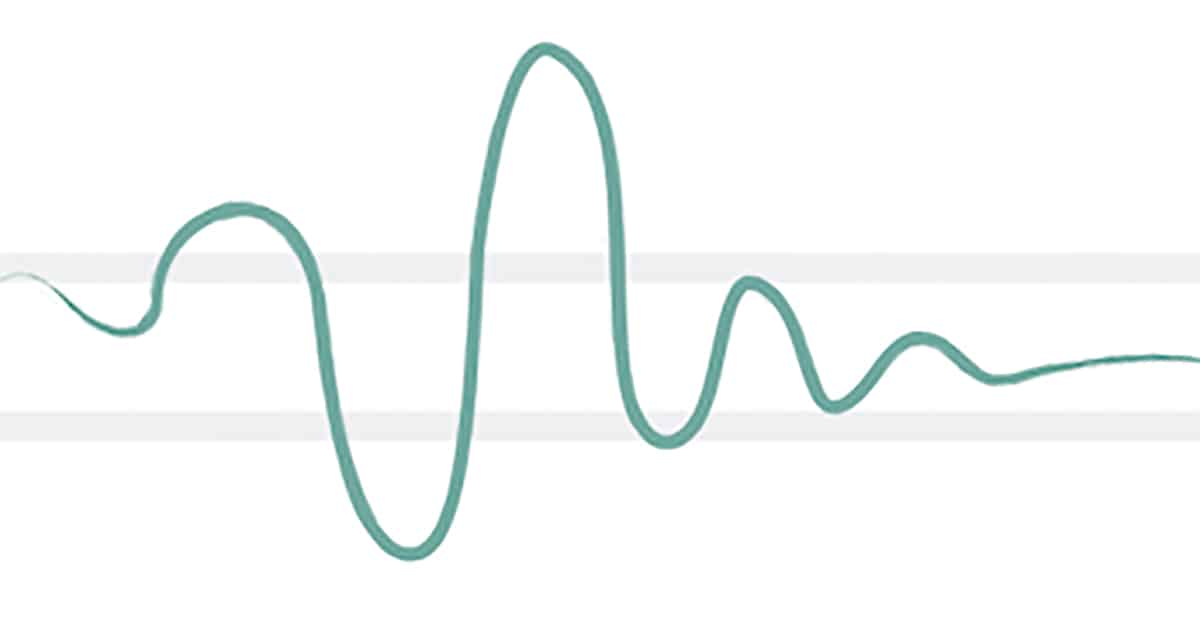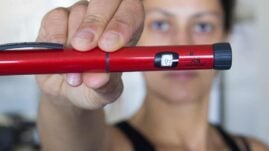One of the most difficult parts of managing a life with diabetes is keeping close watch on your blood sugar levels, and making sure that they stay in a tight range most of the time.
This has historically been measured using a simple blood test called a hemoglobin a1c, or A1c test.
However, now more than ever before, a new concept is taking shape. It’s called “Time in Range” or TiR for short.
What exactly is TiR and how can you use this new measure to improve your diabetes management?
This article will explore everything you need to know about Time in Range and how you can use it to help you.

What is time in range (TiR)?
Time in Range is a pivot away from only measuring A1c levels (the average blood sugar over a 3-month period that gives doctors a sense of a person’s general diabetes management).
It’s a way of measuring the percentage of time in a given day a person is staying within a recommended blood sugar range (typically between 70-180 mg/dL, but varies from patient to patient, and is always individualized between a person and their doctor).
It’s best to have your TiR be as high as possible, with 100% meaning that for all 24 hours in a day, the person had a blood sugar within their goal range, and 0% meaning for no time in a given day someone’s blood sugar levels were within range. Most people fall somewhere in the middle.
Depending on what type of diabetes you have, experts recommend aiming for a TiR of at least 50%, with low blood sugars occurring less than 5% of the day.
It is now seen as one of the most powerful metrics for modern diabetes management, as A1c levels can give a false sense of success.
For instance, an A1c level of 6% (usually seen as “good”) may just be giving an average of lots of high blood sugars and lots of low blood sugars. Time in Range can’t hide the truth.
Early studies suggest TiR can predict long-term diabetes complications. Researchers have also found a strong relationship between different levels of Time in Range and diabetes complications such as eye and kidney disease.
The higher one’s Time in Range, the lower the prevalence of complications.
What are the drawbacks of TiR?
Unfortunately, TiR can only be measured using a continuous glucose monitoring (CGM) system, like the Dexcom, FreeStyle Libre, or Medtronic’s Guardian.
This is because only a CGM is constantly measuring blood sugar levels. CGM systems can be cost-prohibitive, and they are not universally covered by health insurance, especially if you are covered by a state Medicaid program.
While access to CGMs continues to improve across the United States, for many people with high deductible health plans, Medicaid, or for those who are uninsured, TiR is a difficult if not impossible metric to measure without easy access to a CGM.
Additionally, for people who wish to not wear a CGM, the metric cannot be measured by manually testing blood sugar levels. In that case, use of the A1c is still the best to track management over time.
How can I use TiR to improve my diabetes management?
TiR is a powerful tool that should be used to your advantage to minimize both prolonged high and low blood sugars. Here are some tips to make sure it’s helpful for you.
Check for patterns
Your TiR not only shows you the percentage of time per day that you’re spending within (and outside of!) your goal range, but it can also show you trends.
Perhaps you’re running low for the majority of the night, or maybe your blood sugar spikes every day after lunch and has done so for the past 14 days.
If you start to notice patterns, you can then take that information to your doctor and plan accordingly to make changes to either your eating patterns or medications.
Maybe you need to decrease your basal insulin rate at night (if you’re on an insulin pump), split your long-acting insulin dose (if you’re on multiple daily injections), or maybe you need to eat more or fewer carbohydrates at your midday meal if your blood sugars run high or low a few hours later!
Work with your doctor to make these changes, and see your TiR, and resulting diabetes management, improve as a result!
Focus on short-term goals
Using TiR as an incentive to prevent longer-term complications may not always be a helpful mindset, especially for children and teenagers.
However, aiming for a higher TiR over the short term may be a more achievable and digestible goal.
Try starting with smaller goals, like increasing your TiR by 5% over the next week, instead of aiming for 90% TiR all the time. Then, build on your successes and see your diabetes management improve.
Make TiR part of the bigger picture
Time in Range is an incredible tool that can really improve your diabetes management, but it shouldn’t be the only metric you use.
Make sure you continue to eat well, exercise often, manage stress, and seek support when you need it.
Time in Rage, in conjunction with A1c, regularly seeing your doctor are all tools you should use if possible to make sure your diabetes management is the best it can be.
Improvement includes mental health, too
All that being said, TiR can be overwhelming for people who focus on the percentage too much.
It can cause stress, anxiety, and be very hard for people who struggle with obsessive-compulsive disorder or perfectionism.
If TiR is stressing you out, talk with your doctor about more achievable goals you can set. For instance, if your doctor wants to see you achieve a 95% TiR, this might be unrealistic and may be doing nothing but causing you harm!
Additionally, if you’re only able to achieve your TiR goals by limiting your food intake, exercising for multiple hours per day, and not letting go and actually living your life, then the metric isn’t helping you be the healthiest, most balanced you can be.
Talk with your doctor or a mental health professional if your mental health is struggling as a result of TiR and about ways to find more balance in your diabetes management.
Conclusions
Time in Range is a powerful and relatively new metric used to monitor how well someone is keeping their blood sugars in range. It is measured as a percentage of total hours in the day someone’s blood sugar (usually) stays between 70-180 mg/dL, but the goal range can vary by person.
TiR is thought to be an improvement over the A1c tests, which merely measures your average blood glucose over the previous three months, but can give false impressions of “good” diabetes management. The average of many highs and many lows is a great A1c, unfortunately.
TiR is measured using a continuous glucose monitor (CGM). This is great because people can track their TiR in real-time, without waiting for an A1c test. However, CGMs can be cost-prohibitive, especially for the under- or uninsured in the United States. While access to CGMs is increasing, it is still not universal.
You can use TiR to improve your diabetes management by checking your CGM data more often, making small changes throughout the day that will have a big impact, checking for blood sugar patterns and trends, focusing on smaller, short-term goals over the big picture, and incorporating TiR into your overall diabetes management plan, without it overtaking your life and negatively affecting your mental health.
Talk with your doctor if you’re on a CGM but don’t currently utilize TiR, or if you’re not on a CGM but are curious about the power of continuous glucose monitoring and how TiR can help you!



